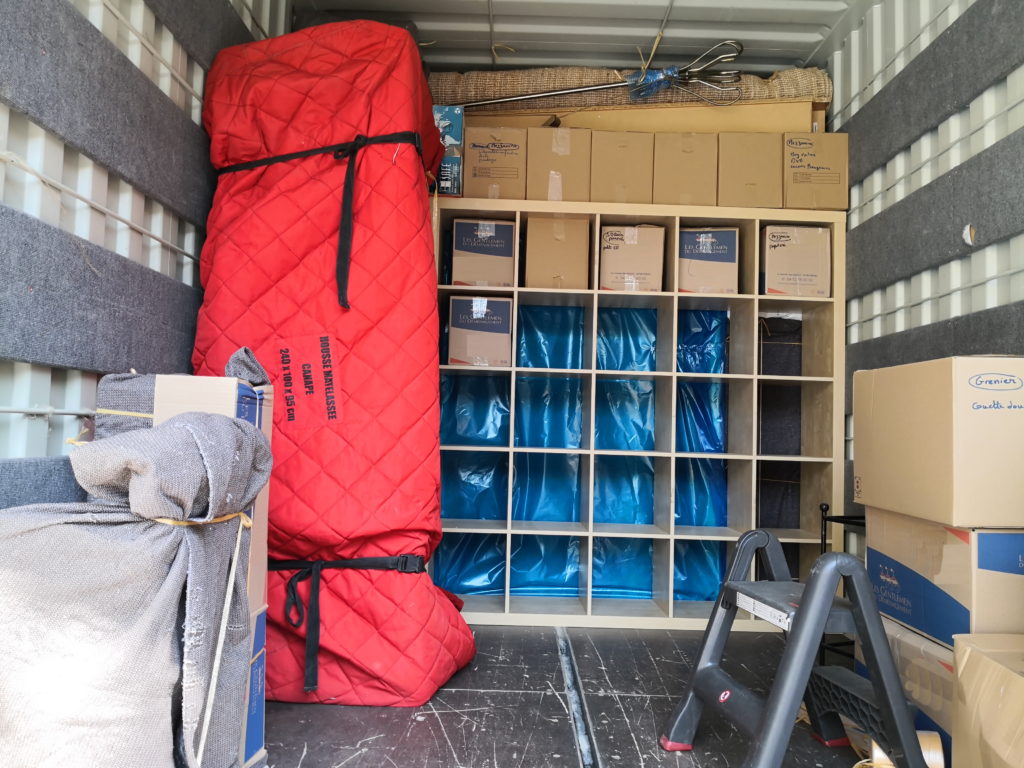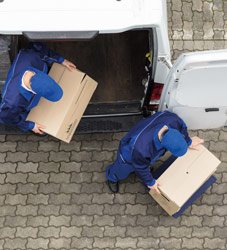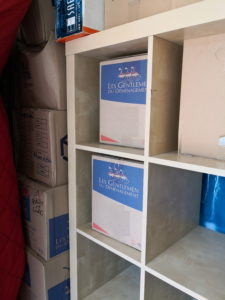For lovers of fine bottles, moving a wine cellar is always a source of concern. In addition to breakage, transporting bottles in poor conditions can affect the taste quality of the precious beverages. So you need to take a few precautions to move a wine cellar in good conditions. But how do you protect your wine bottles so that they can be transported safely? How do you handle your bottles so as not to risk damaging the quality of the wine? And how do you move an electric wine cellar if you have one? Follow our guide to get it right, so you can enjoy a glass of wine in your new home.
Risks of moving wine bottles during a move
 When you have a cellar full of good bottles, moving is always a bit scary. When you've taken the time to select your cellar wines and ensure that they are stored in optimal conditions to allow them to age well, you don't want to spoil everything with a hazardous move.
When you have a cellar full of good bottles, moving is always a bit scary. When you've taken the time to select your cellar wines and ensure that they are stored in optimal conditions to allow them to age well, you don't want to spoil everything with a hazardous move.
On moving day, the main risk is having to shovel up the debris in the event of a collision. Which, of course, no one will be happy about. In addition to breakage, poor bottle handling and inadequate storage can alter the quality of the wine (temperature, box storage...). The physical protection of bottles and the conditions in which they are transported are therefore of the utmost importance.
How to protect your wine bottles during a move?
To protect your bottles for a move, the best solution is still to pack them in cardboard boxes. Avoid wooden crates, which are often too heavy to carry, given the weight of the glass and the precious liquid. In cardboard boxes, your bottles will be better protected against external shocks and easier to carry.
Inside the cartons, make sure to protect each bottle individually to prevent them from colliding during the journey. This can be done using bubble wrap. To make things easier for you, there are specially designed cartons with internal cross-bracing and neck-locking devices. Thanks to this system, you can save time when packing.
Once filled, the cartons must then be closed securely, and if necessary, reinforced at the base with adhesive tape. Remember to make a precise note of the contents on each box, so that you can find your way around when the bottles are returned to the cellar.
How do you transport bottles of wine without compromising their quality?
Tip 1: Load bottles upright
In a wine cellar, bottles are always stored lying down. This is the best way to preserve and age wines. But this is not the best way to transport them when moving. In fact, bottles should travel upside down to limit the movement of the precious liquid, which can upset the wine and alter its taste.
Tip 2: Keep an eye on the outside temperature

Ideally, wine should be transported at a temperature of between 12 and 16°C. You should therefore avoid parking your removal vehicle in direct sunlight on moving day. To limit the temperature variations that can affect wine quality, polystyrene crates are now available. This type of packaging protects your bottles from shocks, while protecting the wine from heat or intense cold.
Depending on the quality of the bottles in your cellar and the distances involved, it may be appropriate to use a refrigerated truck for the journey between the two sites. This may be of interest if you're planning to move far from your base, or abroad.
What precautions should you take with your wine bottles after the move?
To limit the effects of moving, your bottles of wine need to regain their freshness as soon as possible. Reinstall them lying down in your new cellar. You'll then have to wait several weeks for the wine to regain its organoleptic stability.
In this respect, young wines are less likely to be affected by bottle handling and transport. To water your move, wait a few months for the wine to regain its balance, or opt for a younger wine to avoid disappointment.
Moving an electric wine cellar

- Remove all bottles from the wine cellar before moving: the appliance must be completely empty before it can be handled and transported. Bottles must be packed and boxed in the same way as for a traditional wine cellar;
- tape the wine cellar door to prevent it from opening during loading;
- and protect the corners and walls of the device from bumps and scratches.
When transporting your wine cellar, it is essential to avoid laying it on its side, so as not to disturb the stability of the refrigerant contained in the coil. In all cases, wait several hours before reconnecting your wine cellar to stabilize the cooling system.
When it comes to moving your wine cellar, don't hesitate to call on a professional who can offer you the best guarantees for taking care of the bottles and enabling you to benefit from specific insurance in the event of damage. To find out more about the costs involved in moving a wine cellar, contact us.
